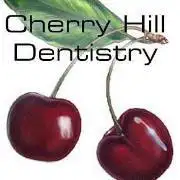Your teeth play a pivotal role in your overall health and well-being. They not only help you chew and digest food but also play a significant part in speech and facial aesthetics. However, not all foods are allies in maintaining dental health. Some are stark adversaries, waging a war against your enamel and gums. Unveiling the dental dangers hidden in our daily diet is crucial for sustaining that radiant smile.
Acidic Assault: The Low pH Culprits
Acidic foods and beverages are notorious for their assault on tooth enamel. Common culprits include citrus fruits like lemons, oranges, and grapefruits, tomatoes, and vinegar-based dressings. Beverages like soda, fruit juices, and wine also have a low pH that can erode enamel, exposing the softer dentin beneath. Enamel erosion leads to increased sensitivity and makes teeth more prone to decay and cavities. It’s advisable to rinse the mouth with water after consuming acidic foods to neutralize the pH, protecting the enamel.
Sugar Strikes: The Sweet but Dangerous Delight
Sugar is a dental enemy, albeit a delicious one. When you consume sugary foods like candy, cakes, and cookies, or drinks like soda and fruit juices, the harmful bacteria in your mouth rejoice. They feast on sugar, producing acid as a by-product. This acid attacks the enamel, leading to tooth decay and cavities. Sticky or gummy candies are particularly menacing as they adhere to teeth, providing a prolonged feast for bacteria. Cutting down on sugar and opting for healthier alternatives like xylitol-sweetened gums can be a wise choice.
Starchy Siege: Carbs that Crumble Your Crown
It might surprise you, but starchy foods like chips, bread, and crackers also pose a threat to dental health. These carbs lodge themselves between teeth and are broken down into sugar by the enzymes in saliva. This sugar then becomes a banquet for harmful bacteria, setting the stage for tooth decay. It’s essential to floss daily to dislodge food particles and thwart bacterial feasting.
Chewy Challenges: Foods that Stick Around
Chewy foods like dried fruits, granola bars, and certain candies have a knack for clinging to teeth. The longer they stick around, the longer bacteria have to feast and produce enamel-eroding acids. Maintaining a thorough brushing routine and considering a dental-friendly diet can mitigate the risks posed by chewy foods.
Hard-hitting Harms: Crunchy Culprits
Crunchy foods like hard candies, ice, and even some nuts can cause physical damage to your teeth. They can lead to chips or cracks, especially if your teeth are already weak or have fillings. Opting for less hard and crunchy foods and avoiding using teeth as tools to open packages can save you from a painful dental emergency.
Alcoholic Attacks: Drying Up Your Defenses
Alcohol consumption can lead to a dry mouth, a condition known as xerostomia. Saliva plays a vital role in neutralizing acids and cleaning away food particles. A dry mouth is a breeding ground for bacteria, paving the way for tooth decay and gum disease. Drinking water and using alcohol-free mouthwash can help keep the mouth moist and reduce the risk of dental problems.
Caffeine Catch: Staining and Sensitivity
Coffee and tea are comforting beverages but come with a dental downside. They can stain teeth, leading to a less-than-pearly smile. Furthermore, the acidity in these beverages can contribute to enamel erosion and sensitivity. Drinking water alongside or rinsing the mouth post-consumption can help mitigate these effects.
Preventive Measures: Protecting Your Pearly Whites
Moderation is key when it comes to protecting your teeth from dietary dangers. Incorporating a balanced diet, maintaining a rigorous oral hygiene routine comprising brushing, flossing, and regular dental check-ups can significantly reduce the risk of dental problems. Awareness is the first step towards maintaining a healthy, radiant smile that reflects your overall health and confidence.





0 Comments